Science Daily News | 03 Jun 2023

Views (179)
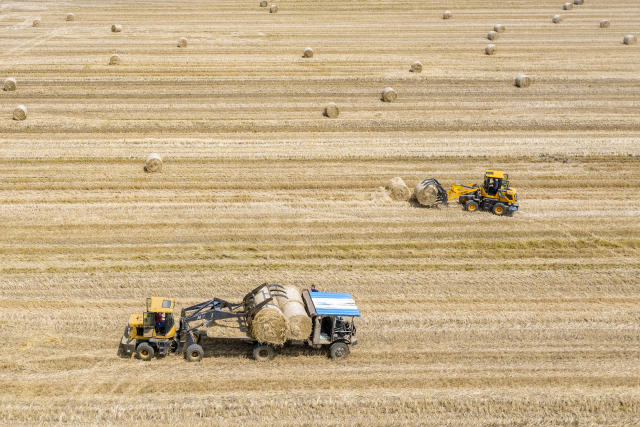
UK inflation: Food prices causing problems for farmers
Tessa Elliot, a farmer from Pembrokeshire, says inflation has made it difficult to keep afloat.
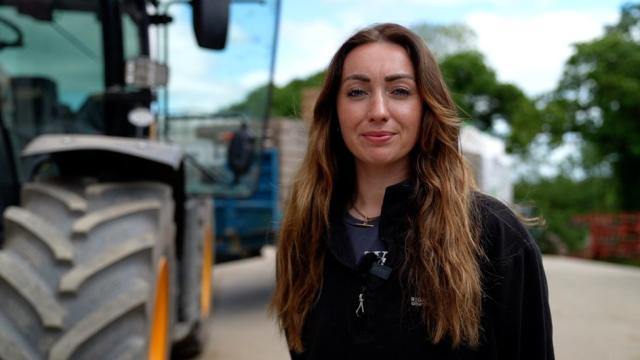
Pembrokeshire is famous for its potatoes and Tessa Elliot is passionate about growing them.
But she said price rises have made the past year "shocking" for farmers as well as consumers.
She said her family farm has faced "almost daily" cost increases for essentials like seed and fertiliser.
Those increases have fed into the price spiral that has hit shoppers with painfully high food bills.
"I know people are paying more for their bag of potatoes or bag of carrots, but it's not because we want more money," said Tessa.
"Our costs have gone up drastically and we are still trying to understand where we can even make a profit."
Cash flow is always a challenge for potato farmers, who can wait more than a year to be paid for their crops after harvesting.
But since the Covid-19 pandemic and Russia's invasion of Ukraine, food production costs have jumped.
"For fertiliser we were paying £290-odd and it shot up to £900 for that same bag," said Tessa, whose family has run Cresswell Barn Farm for more than 40 years.
"Seeds were up £40 a tonne. Labour costs went up. There was nothing that didn't go up double, if not more."
While those costs undermined farmers' profits, they also translated into higher costs for consumers, with food prices increasing by nearly a fifth between April 2022 and April this year.
But supermarkets insist they are working to keep prices "as low as possible."
Matthew Hunt runs Filco, an independent chain of supermarkets in Wales, said: "It's very much a perfect storm at the moment, you're seeing cost increases coming from all directions - the three major ones are fuel, labour and energy."
He said his company was not passing on the full cost increases to customers: "It's squeezing how we operate and we have to look at ourselves and see where we can take costs out of our operations."
"It's a nice soundbite," said Matthew. "How it would work in stores is confusing to me."
But with energy prices having fallen considerably in recent months, what are the prospects of a substantial slowdown in food price rises?
"The good news is that we do think food price inflation has now peaked," said James Walton, chief economist at the grocery industry organisation the IGD.
However he warned that might not lead to "major" price reductions.
"What we're looking at, we think, is food prices levelling off," he said.
"A lot of the things that have driven food pricing remain pretty much in place. The war in Ukraine is ongoing, Russia remains cut out of major food markets, there are still shortages and wage costs are very sticky."
Ticks die when they bite him. This man's immunity to ticks could pave the way for a tick vaccine.
Richard Ostfeld has been bitten by hundreds of ticks but has never developed any tick-borne diseases. He has what's called acquired tick resistance.
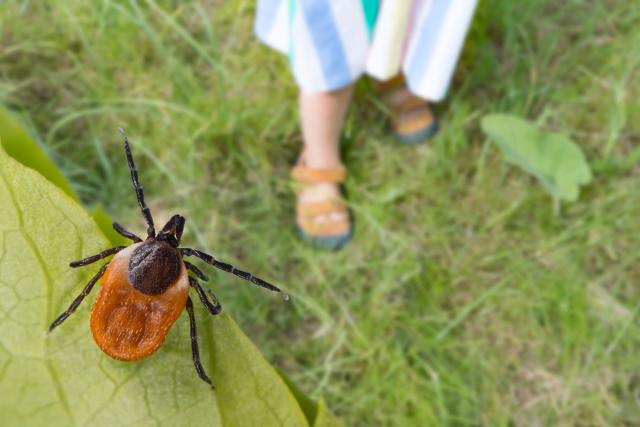
Richard Ostfeld gets a burning, itchy welt after a tick bite but has never gotten sick from one.
Research suggests histamine in the blood kills the ticks long before they can infect him.
He has acquired tick resistance, which may help guide research and development of a tick vaccine.
He is one of the rare individuals who has developed acquired tick resistance.
Thanks to his work as a community ecologist, Ostfeld often roams through tick-infested territory, and hundreds of ticks have bitten him over the years.
He said all these bites have trained his immune system to recognize and attack certain proteins in the tick's saliva. (But don't go searching for ticks just to try and build immunity, since you might contract a debilitating tick-borne disease.)
"I develop an itchy, burning welt at the site of the tick bite, shortly after the tick attempts to embed its mouthparts," Ostfeld said.
The welt lasts a few days, but it's harmless for him. For the tick, not so much.
These diseases come from bacteria and viruses, collectively known as pathogens. Which pathogens local ticks carry depends on the species and where you live.
In the northeastern states, Ostfelt said one-third of ticks carry the bacteria that cause Lyme disease (Lyme borreliosis). He added that roughly one in five ticks can infect you with babesiosis, and one in 10 can cause anaplasmosis.
Given those odds, one of the hundreds of ticks that have bitten Ostfeld probably carried pathogens, but the ticks died before their infectious saliva could invade his body.
"It takes hours to a couple of days for any pathogens to leave the tick and enter your body," Ostfeld said.
Because his immune system kills the ticks off so quickly, "they are never able to transmit pathogens to me."
Ostfeld is by no means the only person with ATR, but so few people report it that scientists don't know how common or uncommon it is.
But many people are still vulnerable to tick bites, and that is a growing problem.
"There clearly has been an increase in recent decades in the incidence of tick-borne disease in the human population. That's true nation-wide," Ostfeld said.
"That is not due to an increase in the proportion of ticks that are infected," Ostfeld said. Rather, it's because tick bites in general are becoming more common, he added.
The length of ticks' hunting season has also expanded. "When springs come earlier in the year and the winters come later, then the ticks have a longer period of time to find a host," Ostfeld said.
There have not been any studies in which scientists have induced ATR in humans. But Ostfeld said some research labs are looking into the possibility. It's just a tricky process, given that a vaccine could trigger an auto-immune response if it attacks the immune system too broadly.
Despite the challenges, Ostfeld said ATR is still worth looking into. "In my mind, a very promising direction is to develop a vaccine against the ticks themselves, against the right choice of proteins and antigens in the ticks' saliva."
"I think it's a very important direction for research to protect us against all the tickborne diseases that are circulating and the new ones that will arise, almost certainly, in the next couple of decades," Ostfeld said.
Perhaps one day, we'll all have immune systems as skilled in tick-killing as Ostfeld's.
Boeing again delays first piloted test flight of Starliner crew ferry ship
A new launch target was not announced, but Boeing officials said a flight this year is still feasible. In theory.
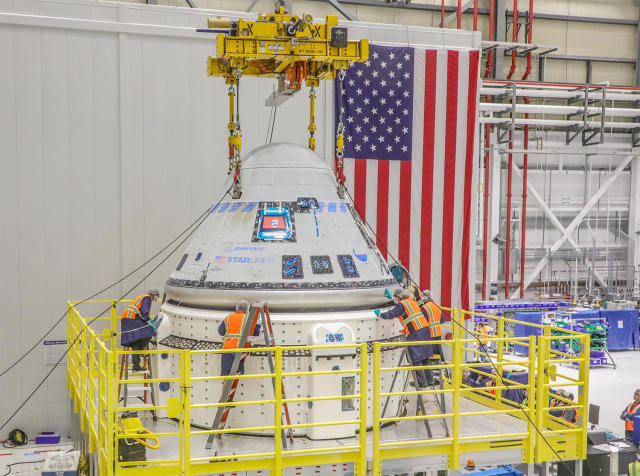
It was the latest in a series of disappointments for veteran astronauts Barry "Butch" Wilmore and Sunita Williams, who had planned to blast off atop a United Launch Alliance Atlas 5 rocket on July 21 for the Starliner's third flight to the International Space Station and its first with a crew on board.
But during a series of reviews over the last two weeks to clear the way for spacecraft fueling, engineers ran into two issues that could not be resolved in time: weaker-than-expected "soft links" that connect parachute suspension lines to the spacecraft; and tape wrapped around electrical lines that use a flammable adhesive.
Testing and analysis showed the soft links had been incorrectly analyzed earlier and did not have the required factor-of-two safety margin in scenarios where the loss of a parachute for any reason could overload one or more soft links used by the two remaining parachutes.
The tape flammability issue could prove especially challenging because several hundred feet or more are used throughout the Starliner to protect wire harnesses from chafing or other damage. Boeing must now make sure a short circuit or some other ignition source cannot trigger a fire.
Why the problems were not caught earlier is not yet clear.
"Over the last week, we've been working to understand these issues," said Mark Nappi, Boeing's Starliner program manager. He said the company carried out tests and analyses to find out if the risks were acceptable "or was it something that would require modifications or further work?"
"This reached the top levels of Boeing," he told reporters in an afternoon teleconference, "all the way up to our CEO. Boeing unanimously decided that this was something we needed to correct ... and we've decided to stand down the preparation for the CFT (Crew Flight Test) mission in order to correct these problems."
A new launch target was not specified and while Nappi said a flight this year was "feasible," it appeared unlikely given the amount of work and re-testing that will be required.
Steve Stich, NASA manager of the Commercial Crew Program, said Wilmore and Williams sat in on an all-hands meeting to discuss the issues and were in agreement with the decision to stand down.
"This team will solve these problems and we'll go fly when we're ready," Stich said. "Suni Williams was representing the crew and she voiced that (they) are 100% behind the decision. They understand that the team has crew safety first and foremost in their minds and they'll fly ... when the vehicle's ready to go fly."
The Starliner's troubled history is surprising to many because of Boeing's reputation as a leader in human spaceflight, building the first stage of the legendary Saturn 5 rocket and its successor, the Space Launch System moon rocket, and serving as the International Space Station's prime contractor.
In 2014, Boeing and SpaceX won NASA contracts valued at a combined $6.8 billion to build commercial crew ships that could carry NASA and partner-agency astronauts to and from the space station. The contracts covered up to six flights per company, plus one crewed and one uncrewed test flight.
SpaceX, under an initial $2.6 billion contract, designed a crewed version of its Dragon cargo ship that would ride into orbit atop the company's Falcon 9 rocket. Boeing designed its own capsule — Starliner — under a $4.2 billion contract, relying on the Atlas 5 for the trip to orbit.
After a successful unpiloted test flight, SpaceX launched a two-man crew to the space station in May 2020 — three years ago this week — for the first piloted test flight. The company has now launched 10 piloted Crew Dragon missions, seven for NASA and three privately funded flights, boosting 38 astronauts, cosmonauts and civilians to orbit.
The second time around, the Starliner completed its major objectives, robotically docking with the space station as planned and safely returning to a parachute-assisted touchdown in Utah. At that point, NASA was aiming for a piloted launch late last year.
But additional analysis and reviews pushed the flight into 2023 and this past April, launch was delayed to no earlier than July 21 to give engineers more time to review paperwork and analysis and carry out more tests. That work was nearing completion when the parachute and wiring issues cropped up.
In the meantime, NASA extended SpaceX's initial six-flight contract to 14, providing astronaut ferry flights to the station through 2026. Boeing's contract has not been extended beyond the initial six crew rotation flights booked in 2014. Nappi said the company is absorbing the costs of the delays.
Despite the delays, Stich said NASA is counting on the Starliner to provide assured access to the International Space Station through the end of the decade.
"There's an unwavering commitment to Starliner and to having a second crew transportation system," he said.
"Our ultimate goal is to have one SpaceX and one Boeing flight per year to rotate our crews to station. And so we support Boeing, and we're doing everything we can during the investigation of each of these issues and trying to get to flight as soon as we can when it's safe to do so."
Boeing signs alternative fuel deal with Los Angeles startup to cut carbon footprint
As the aviation industry seeks to cut its carbon footprint, Boeing has just signed a deal to help its quest for a sustainable jet fuel, and it's tied to an unlikely source: the ocean. The aerospace giant has signed a deal with a Los Angeles-based startup to buy hydrogen that will be produced by facilities designed to cleanse seawater of carbon dioxide so the ocean can absorb more of that greenhouse gas contributing to global warming. Equatic said Boeing has agreed to pre-purchase the hydrogen, which will be produced when it employs the carbon-removal system — developed by University of California Los Angeles engineering faculty — at facilities at the port of Los Angeles and Singapore.
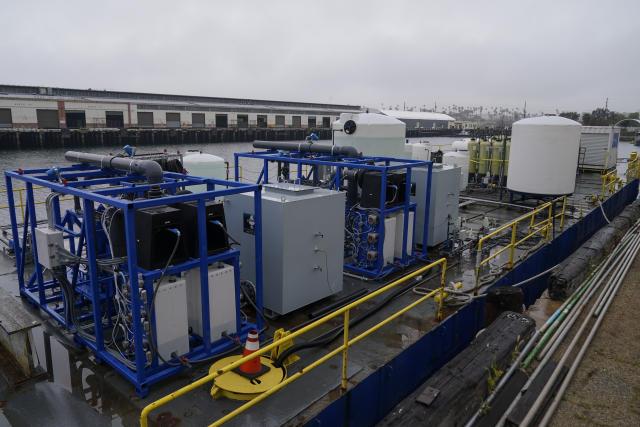
SAN DIEGO (AP) — As the aviation industry seeks to cut its carbon footprint, Boeing has just signed a deal to help its quest for a sustainable jet fuel, and it's tied to an unlikely source: the ocean.
The aerospace giant has signed a deal with a Los Angeles-based startup to buy hydrogen that will be produced by facilities designed to cleanse seawater of carbon dioxide so the ocean can absorb more of that greenhouse gas contributing to global warming.
By absorbing 30% of carbon dioxide emissions since the Industrial Revolution, the ocean has acted as a giant carbon sink and been a crucial buffer in protecting people from even worse effects of early climate change.
Equatic said Boeing has agreed to pre-purchase the hydrogen, which will be produced when it employs the carbon-removal system — developed by University of California Los Angeles engineering faculty — at facilities at the port of Los Angeles and Singapore. It is slated to be up and running in 2025. Researchers have been testing the system at demonstration sites in both locations.
The green hydrogen could then be used as a component in sustainable aviation fuel. Aviation currently accounts for about 2.5% of worldwide emissions of carbon dioxide.
Equatic’s Chief Operating Officer Edward Sanders acknowledged that Boeing’s backing is a huge boost for an initiative that is just getting off the ground.
“With the deal with Boeing, they recognize that hydrogen will be useful for them," he said. "And we’ve had some very encouraging conversations with other industries who also need hydrogen who have plans to do it through the carbon-neutral generation of green hydrogen.”
To help keep global warming under 1.5 degrees Celsius, the world’s largest association of airlines, the International Air Transport Association, has set a goal for the air transport industry to reach net zero carbon emissions by 2050. President Joe Biden's administration wants all kerosene-based jet fuel to be replaced with sustainable fuel by 2050.
While other forms of transportation are increasingly being electrified, making large, battery-powered planes has presented a costly challenge and many in the aviation industry are instead exploring replacing fossil fuels with sustainable fuels, which would not require major technical modifications to the aircraft. The world's first synthetic kerosene plant opened in Germany in 2021.
Equatic said it will remove 62,000 metric tons of carbon dioxide for Boeing and supply the aerospace company with 2,100 metric tons of hydrogen under its five-year agreement. The companies declined to provide details about how much revenue would be generated or other details of the deal.
Sheila Remes, Boeing’s vice president of environmental sustainability, said in a statement that “reaching aviation’s sustainability goals will require a multi-faceted approach and Boeing sees significant opportunity in Equatic's technology.”
Equatic's process sends an electrical charge through seawater that then sets off a series of chemical reactions that trap the greenhouse gas into a solid mineral, while also producing hydrogen. The seawater is then returned to the ocean and can pull more carbon dioxide out of the air, while the solid mineral, which contains calcium carbonate, can then settle to the sea floor.
Revenue from selling hydrogen, as well as carbon credits companies can claim to balance out their pollution, will be applied toward Equatic’s plans to open facilities.
According to the UCLA team that developed the technology, at least 1,800 industrial-scale facilities would be needed to capture 10 billion tons of atmospheric carbon dioxide per year, but fewer could still make a dent.
The aim is to remove the carbon at a cost well below $100 per metric ton, the company has said. It added that the hydrogen would be produced at less than $1 per kilogram, which would be substantially less than the current cost of cleanly-produced hydrogen.
Equatic said it aims to reach 100,000 metric tons of carbon removal per year by 2026 and millions of metric tons per year by 2028.
A strawberry moon will take the night sky this weekend. Here's how to see it.
Around the world, people can catch a sweet treat in the night sky this weekend.

Why is it called the strawberry moon?
What will the strawberry moon look like?
This year, the Antares bright star, which is 36.7 light years away, will appear a few degrees to the right of the moon, according to NASA.
When will be the best time to see the June full moon?
The strawberry moon will be peak just before midnight at 11:42 p.m. Saturday EDT, said NASA, whose observations and time are based off their headquarters in Washington, D.C. For observers in Argentina and in Atlantic Daylight Time zones eastward across the rest of North America, Europe, Africa, Asia, and Australia, the strawberry moon will rise on Sunday, NASA said.
It will look full from Friday night through Monday morning.
World’s wheat supply at risk of a dangerous shock due to heat and drought, study warns
Extreme heat waves and drought due to climate change could shock the global supply of wheat and send prices soaring, according to a new study.

Extreme heat waves and drought due to climate change have the potential to shock the global food supply and send prices soaring, according to a new study.
The research, published Friday in the journal npj Climate and Atmospheric Science, assesses a worst-case scenario in which extreme weather hits two breadbasket regions in the same year, hammering winter wheat crops in both the U.S. Midwest and northeastern China.
Winter wheat is planted in the fall, goes dormant in winter cold, then gets harvested in early summer. The study found that the extreme weather conditions that would push those wheat crops beyond their physiological tolerances are becoming more likely. If such weather affected multiple regions at once — a scenario possible in today’s climate — it could stress the global food system in dangerous ways.
Erin Coughlan de Perez, the study’s lead author and a climate scientist and associate professor at Tufts University, said the research was meant to show political leaders and disaster responders the degree to which a critical crop is under threat, so that they can prepare accordingly for such a crisis.
“We’re suffering from a failure of imagination in terms of what this could look like,” Coughlan de Perez said. “The whole point of imagining these serious consequences — we could take action to prevent them and build a more resilient system.”
In the new study, Coughlan de Perez and her collaborators ran climate models for the Midwest and northeastern China, then compared the results with known physiological tolerances of the winter wheat grown in those regions.
High spring temperatures can both slow down wheat’s growth and also cause key enzymes to break down within the plant.
The climate models showed that heat waves that in 1981 were expected to affect the Midwest in only 1 out of 100 years are now likely every six years. In northeastern China, a 1-in-100 year heat wave is now expected to happen every 16 years.
Heat that severe could cause crop failures.
“Physiologically, if we get heat waves that are unprecedented and bigger than things that we’ve seen in the past, this can be devastating for wheat crops,” Coughlan de Perez said. She added that these two key agricultural areas have never experienced temperatures as high — or damaging — as the climate models say is possible.
“Places that have not recently experienced an extreme event or disaster are places that probably aren’t preparing for one,” she said.
Weston Anderson, an assistant research scientist at the University of Maryland and NASA who specializes in climate impacts on food security, said risks to crucial crops are mounting as the world continues to warm.
The new research offers “a solid and sound way to evaluate threats to our food system that are outside the range of the historical record,” said Anderson, who was not involved in the study.
Although the climate models used in the research did not find a strong connection between heat wave patterns in the Midwest and northeastern China, Coughlan de Perez said it’s possible that such events could overlap in the same year.
“We should be considering these sorts of threats and the possibility that extreme climate events are leading to more frequent shocks on a global scale, even for these crops where we expect average yields to be increasing,” Anderson said.
0 Likes
